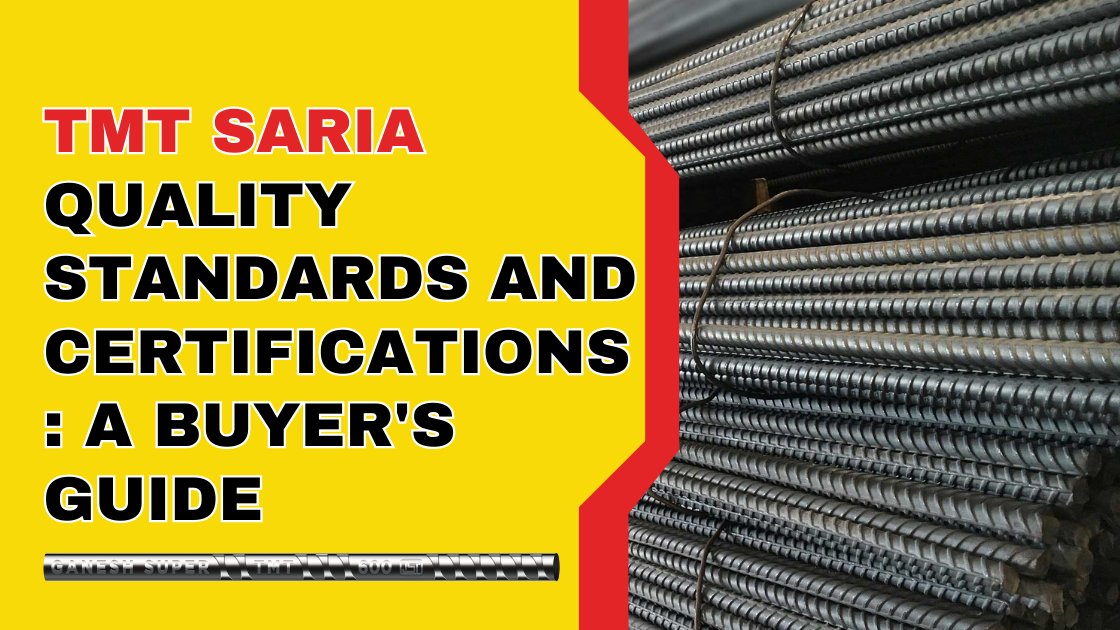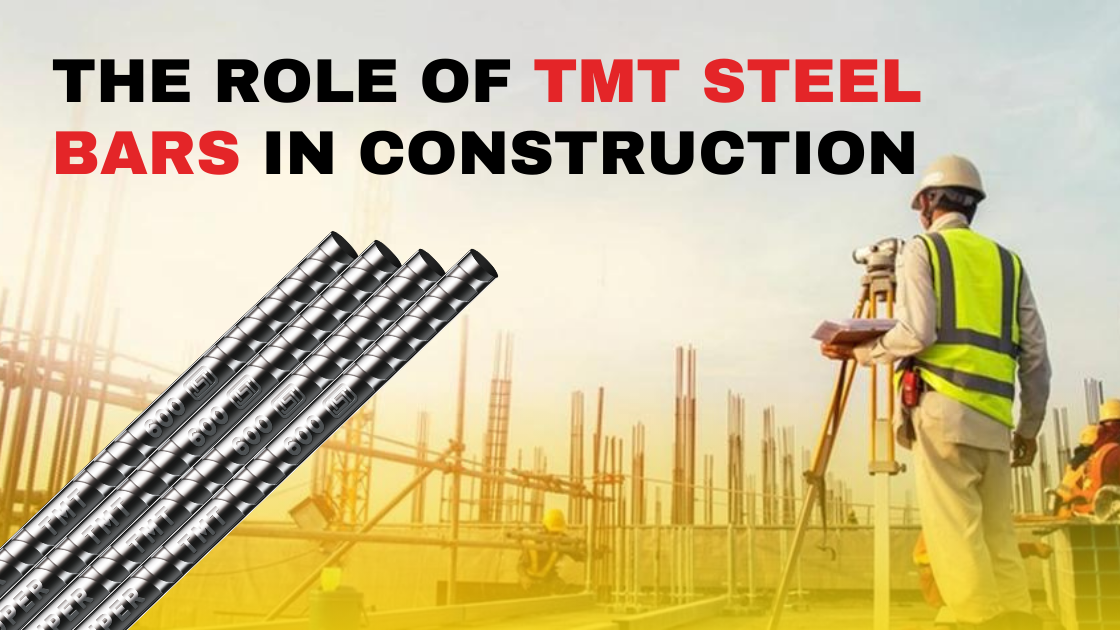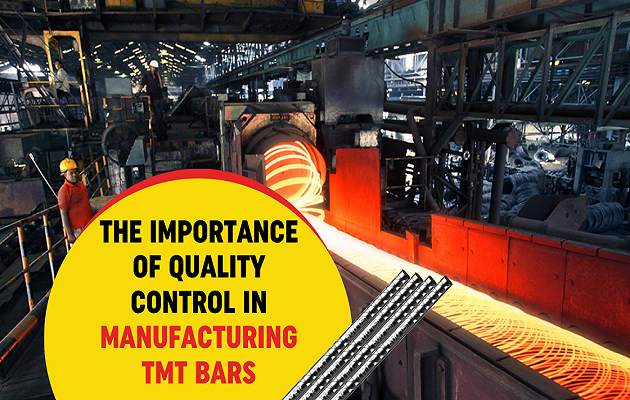In the construction world, the strength and reliability of materials are paramount, and TMT Saria plays a crucial role in ensuring sturdy structures. Their quality standards serve as a guiding light for TMT saria manufacturers and buyers alike, ensuring that the steel bars meet specific criteria for strength, durability, and safety. These standards are like a set of rules that TMT Saria must follow during its creation, ensuring that the end product is robust and dependable. Key elements, such as the composition of steel, manufacturing processes, and adherence to designated parameters, all play a vital role in determining the quality of TMT Saria.
In this blog, we’ll delve into the significance of these quality standards, shedding light on why they matter and how they contribute to the overall reliability of TMT Saria.
Understanding TMT Saria Manufacturing Processes
Manufacturing high-quality TMT Saria involves a series of precise steps and advanced technologies. The process begins with selecting the right raw materials, usually high-grade steel, followed by heating them at extremely high temperatures. This is where advanced technologies like Tempcore come into play, ensuring uniform heating. The hot steel is then intricately cooled, creating a strong outer layer and a flexible inner core. This dual nature enhances the strength and durability of TMT Saria. The final steps involve cutting the bars to the desired length and subjecting them to quality checks. Understanding these manufacturing processes is key to appreciating the excellence of TMT Saria.
National and International Quality Standards for TMT Saria
National and international organizations set crucial standards for TMT Saria, ensuring uniform quality globally. In India, the Bureau of Indian Standards (BIS) specifies guidelines, while international bodies like ASTM International and the British Standards Institution (BSI) contribute to global benchmarks.
These standards cover vital parameters such as the chemical composition of steel, mechanical properties like strength and ductility, and adherence to specific manufacturing processes. Compliance with these benchmarks ensures that TMT Bars manufacturers meet established criteria for safety and performance, making them reliable for construction projects worldwide.
Certifications as a Mark of Reliability
Certifications serve as a vital mark of reliability for TMT Saria, assuring buyers of its quality. These certifications, granted by independent bodies, validate that the steel bars meet specific industry standards. They act as quality assurance, indicating that the TMT Saria has undergone rigorous testing and adheres to essential criteria for strength, durability, and safety. Certifications provide a level of confidence for buyers, assuring them that the product meets established benchmarks. Essentially, when TMT Saria carries relevant certifications, it signifies a commitment to quality and serves as a trustworthy choice for construction projects, reinforcing the reliability of the material.
Quality Control Measures in TMT Saria Production
TMT Saria manufacturers implement stringent quality control measures to ensure the excellence of their products. These measures involve thorough checks at various stages of production, from raw material selection to the final product. Manufacturers employ advanced testing methods, including spectroscopy and mechanical tests, aligning with industry standards and certifications. By adhering to these measures, TMT Saria producers guarantee that their products meet the prescribed quality benchmarks. This commitment to quality control not only enhances the reliability of TMT Saria but also reinforces its alignment with industry standards and certifications, assuring buyers regarding the product’s performance and durability.
Key Parameters to Evaluate When Choosing TMT Saria
When choosing TMT Saria, buyers must consider specific parameters to ensure they get a reliable and high-quality product. Firstly, examine the strength of the TMT Saria, often measured in terms of its yield strength and tensile strength. Higher values indicate superior strength, contributing to the overall durability of structures.
Next, focus on ductility, which gauges the material’s ability to deform without breaking. Optimal ductility ensures the TMT Saria can withstand stress and load variations, making it suitable for diverse construction needs. Moreover, evaluate the percentage of elongation, indicating how much the material can stretch before breaking.
Corrosion resistance is another key parameter. TMT Saria, with effective corrosion resistance, ensures longevity and reduces maintenance costs. Additionally, scrutinize the bendability and weldability of the bars, crucial for shaping and joining them during construction.
The rib pattern on the surface enhances the bond between concrete and TMT Saria, contributing to structural stability. Finally, check for relevant certifications such as IS:1786, confirming that the TMT Saria adheres to recognized standards. Considering these parameters ensures that the chosen TMT Saria not only meets industry benchmarks but also guarantees reliability and longevity in construction projects.
Navigating Challenges in Assessing TMT Saria Quality
Navigating challenges in assessing TMT Saria quality can be daunting for buyers. One common hurdle is the lack of awareness about industry standards and certifications. To overcome this, buyers should educate themselves about relevant benchmarks and certifications, ensuring they make informed decisions. Another challenge is the varied information provided by TMT bars suppliers, making it difficult to compare products accurately. Buyers can overcome this by seeking independent third-party testing reports or certifications from reputable organizations.
Furthermore, inconsistency in labeling and branding of TMT Saria poses a challenge. Buyers should prioritize products with clear and verifiable certifications, ensuring the steel bars meet the required standards.
Lastly, the counterfeit market can lead to inadvertent purchases of substandard TMT Saria. To tackle this, buyers should only engage with trusted and established suppliers with a proven track record. By addressing these challenges proactively, buyers can navigate the complexities of assessing TMT Saria quality and make reliable choices for their construction projects.
Takeaway
There’s no denying the fact that the reliability of materials, particularly TMT Saria, stands as the bedrock for robust structures. As a buyer, the responsibility lies in navigating potential pitfalls, from understanding industry standards to deciphering varied product information. Ensuring the chosen TMT Saria aligns with crucial parameters becomes paramount for a sturdy foundation. Therefore, exercise caution, educate yourself, seek certifications, and collaborate with reputable TMT bars suppliers. A vigilant approach ensures your choice contributes to enduring and dependable structures.





